Harker in bloom
Brightly colored drought-resistant plants and trees laden with ripening apricots rustle in the fall breeze. Spring may be over, but fall promises a blossoming new horizon for the landscaping between Dobbins and Davis Field—the beauty of nature, in our very own backyard.
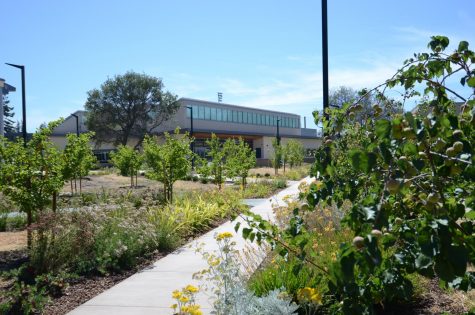
Brightly colored drought-resistant plants and trees laden with ripening apricots rustle in the late spring breeze. The landscaping between Dobbins and Davis Field appeared in the early spring this year. “All of the planting that we did is either drought tolerant or we were trying to depict the history of the Santa Clara Valley,”Facilities director Mike Bassoni said. Drought resistant plants in the landscaping include bird-of-paradise and silver ragwort.
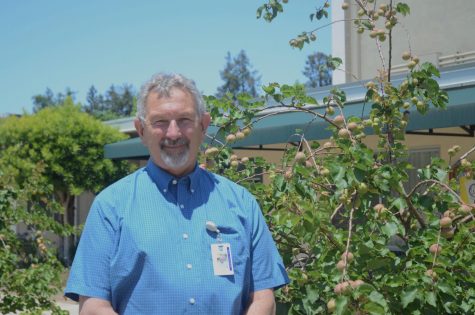
Bassoni provided input on the fruit trees in the landscaping and directed the salvaging and replanting of the three oak trees that are now next to RPAC. “We want the students to experience what it was like to be here in the Santa Clara Valley in the 1940s, 50s, 60s,” Bassoni said. “That’s how I grew up.” The Santa Clara Valley is the region between the southern end of San Francisco and Gilroy. Filled with fruit trees, the landscaping is meant to reflect the Valley’s past. “In the first half of the twentieth century, the primary industry was agriculture,” Bassoni said. “People from Europe found out that the weather and the soil and the environment was very similar to Italy and Spain and Portugal, so a lot of those people came here to start farms,” Bassoni said.
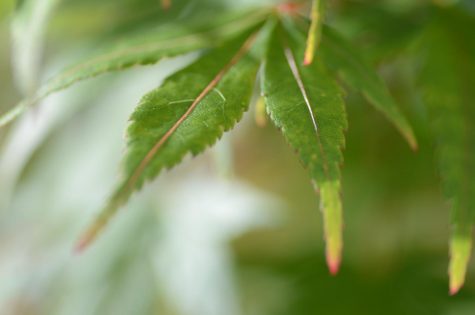
Acer Sango Kaku – The leaves of a Japanese maple near Nichols are illuminated by the soft glow of the morning sun. Two Japanese maples have been planted in the section of the landscaping closest to Nichols. Unlike the other maple trees, these will not become especially tall. “They’re pretty compact trees, they don’t get real big,” Bassoni said.
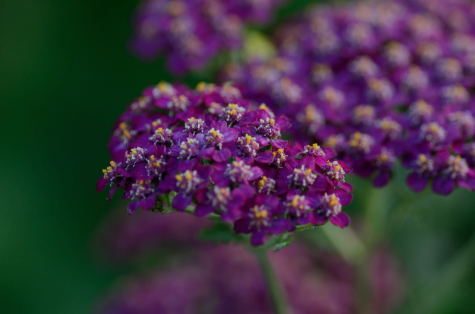
Achillea Millefolium – Yarrow blooms near the Main office. Achillea millefolium grows in all regions of California, except its deserts.

Achillea Millefolium Leaves – Vividly green yarrow leaves catch the sunlight near the Rothschild Performing Arts Center (RPAC) on a May morning. In ancient times, yarrow was called herbal militaris for its ability to stanch blood.
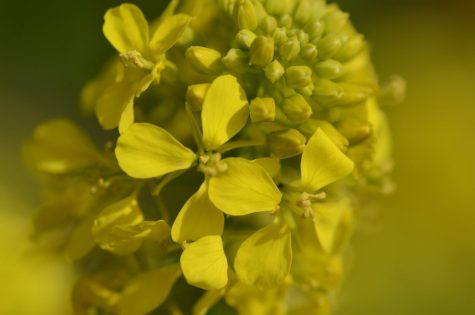
Brassica Napu – Mustard grows in front of the Main office. Europeans brought the plant to California in the 19th century, according to Bassoni. Since then, the plant has been omnipresent in California’s orchards. “The mustard seeds like the soft, tilled soil, it doesn’t mind being turned over by tractors and whatnot, it grows very quickly in the spring and then dies off and recycles,” Bassoni said. “That’s why we wanted to put the yellow mustard, because again, that depicted the orchards of California.” Towards the end of the school year, the mustard was cut down. “Next year, when we get the winter or the spring rains, it’ll start growing again naturally, and it’ll look like this every year,” Bassoni said.
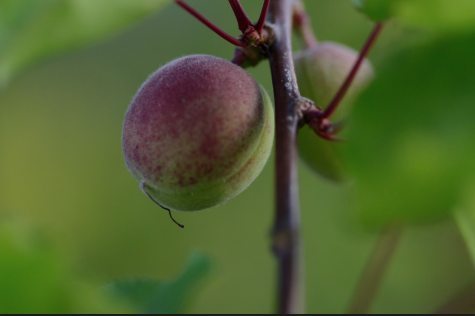
Apricot Blenheim – A ‘Kwanzan’ variety apricot grows on one of the apricot trees planted near the RPAC This year’s harvest will be substantial, despite the trees’ youth. “The students are welcome to go by and pick and eat it right off the tree,” Bassoni said.
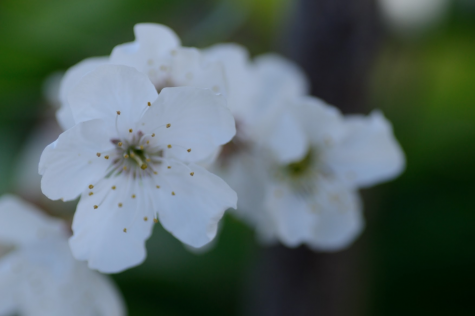
Apricot flowers – Apricot flowers blossom on the area of the landscaping near Dobbins hall. The Kwanzan apricots have been planted alongside Santa Rosa plum and bing cherry trees to reflect the agricultural heritage of the Santa Clara Valley.
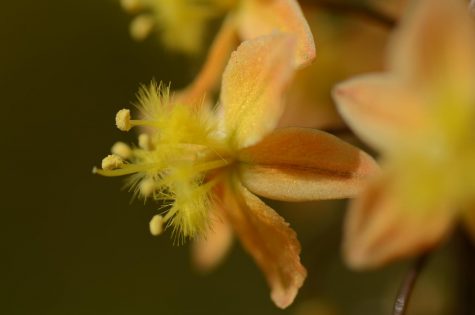
Bulbine – One of the sunset-orange bulbine blossoms alongside the sidewalk near Main sparkles in the sunlight, petals outstretched. This is one of the plants that facilities director Mike Bassoni refers to as ornamentals. “On the perimeter, it’s mostly ornamentals, different plants,” Bassoni said, “They’re there because they add color, but primarily because they’re drought tolerant, so we don’t have to put a lot of water.” This drought-resistant plant requires little water: the San Marcos Growers Wholesale Nursery identifies it as having Low Water Needs, meaning that this plant can survive on northern California’s roughly 25 annual inches of rain without artificial irrigation.
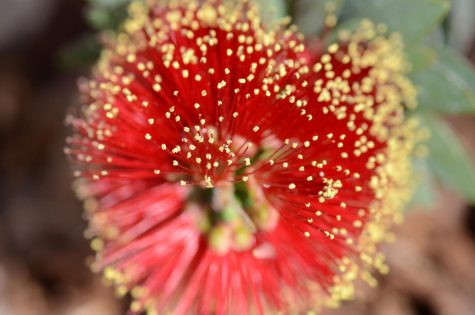
Callistemon Little John – Callistemon “Little John” grows on the ground near the sidewalk by the Main office. This is another ornamental planted not just for its appearance but also for drought resistance.
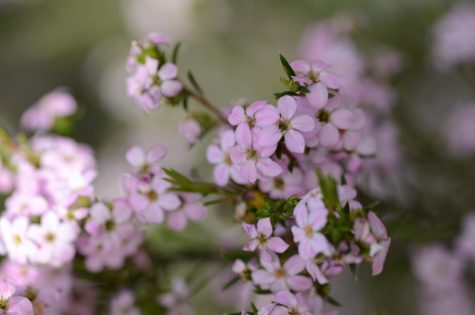
Coleonema Sunset Gold – Pink Coleonema or Breath of Heaven flowers blossom on a bush. Coleonema is less drought resistant than some of the other bushes planted, but tolerates highly sunny conditions and coastal winds.
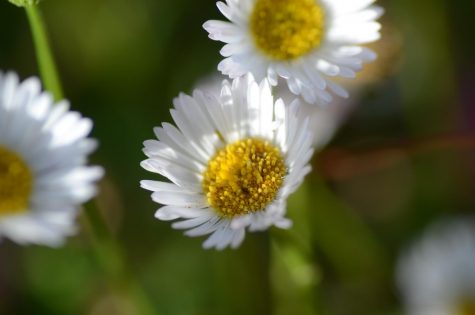
Erigeron Karvinskianus – An Erigeron Karvinskianus flower blooms in front of the gym. This groundcover is known by many names from Latin American fleabane to the Santa Barbara daisy. It does not tolerate extreme heat or cold, has mild water needs and may shut down in extreme weather but returns to blooming quickly once conditions are satisfactory.
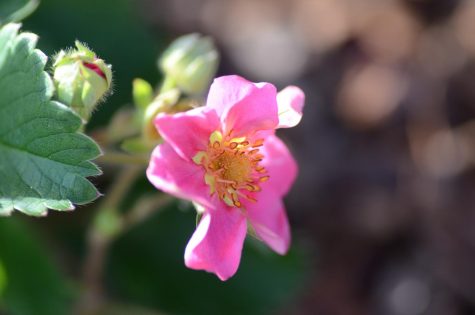
Fragaria Pink Panda – A vibrantly pink Fragaria “Pink Panda” flower stretches its petals in the sunlight on a plot in directly in front of RPAC. This ornamental strawberry produces edible berries infrequently. It prefers to be in full sunlight and requires moderate irrigation, which is ideal for regions with a more or less dry climate, such as the Bay Area.
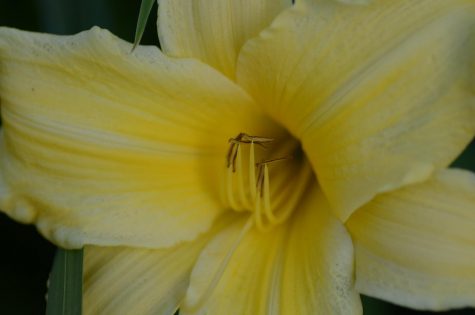
Hemerocallis – Yellow Hemerocallis, more commonly referred to as the daylily, blooms near the athletic center. The variety planted as part of the landscaping is one of at least 19 varieties of Hemerocallis. Daylilies, which are ornamentals that are not native to California, do well in light soils or dirt that consists of smaller particles, allowing it to drain easily.
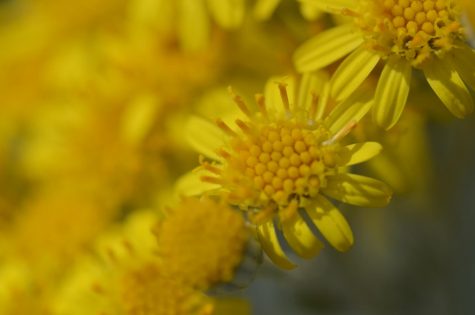
Jacobaea Maritima – Jacobaea Maritima or silver ragwort, another ornamental, grows alongside the pathway in front of Main. Silver ragwort is a drought-tolerant evergreen that occasionally blooms with yellow flowers. The plant, an herbaceous perennial, lives for more than two years and has cell walls that do not contain lignin, a complex polymer that gives trees and other ligneous plants their woody texture.

Jacobaea Maritima 2 – Tomentose ragwort leaves stretch outwards. Commonly planted for its silvery-grey, intricate foliage, some gardeners remove its blossoms to focus attention on the leaves, according to the Missouri Botanical Garden’s online database.
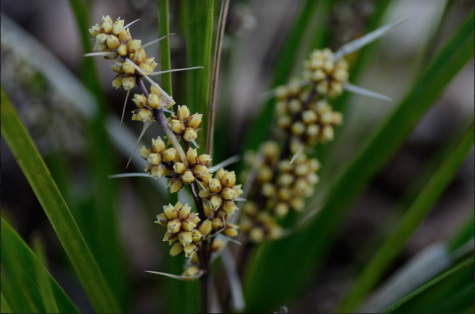
Juncus Patens – Yellow flowers of a Juncus Patens, a native of the North American west coast, bud on one of the pathways that cut through the landscaping. Though this plant prefers regions that are damp year-round, rush can tolerate dry soil and low irrigation.
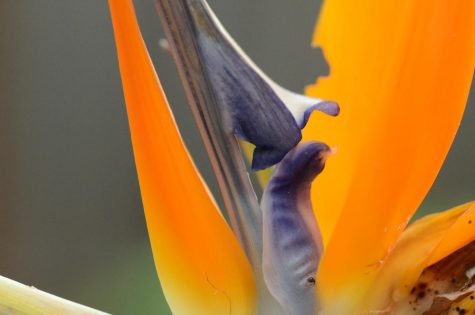
Strelitzia Reginae – A strikingly orange and purple bird of paradise, or Strelitzia Reginae, blossoms alongside a pathway through the landscaping. “It doesn’t really go with the orchard, but it’s very drought tolerant,” facilities director Mike Bassoni said. “The Europeans brought those over here.” Unlike the other flowering plants in the landscaping, the bird of paradise is not commonly pollinated by insects. In the wild, sunbirds pollinate Strelitzia Reginae.
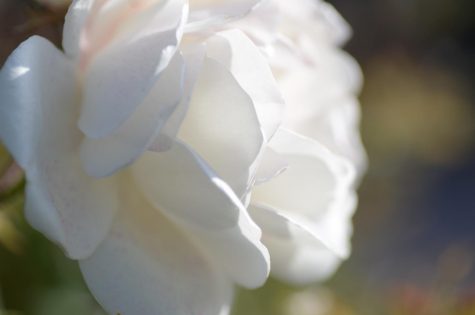
Rosa SPP – A white rose is illuminated by the morning light. “We have roses by the gymnasium,” facilities director Mike Bassoni said. “They’re there because they add color, but primarily because they’re drought tolerant, so we don’t have to put a lot of water.”
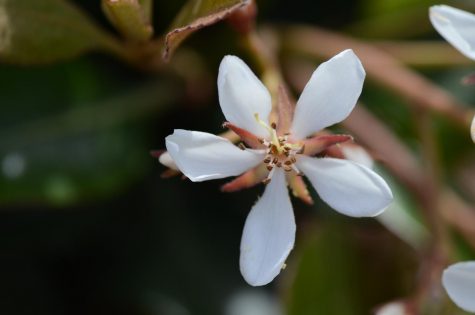
Rhaphiolepis Indica – A Rhaphiolepis Indica flower blooms. The plant’s common name is Indian hawthorn, and it is drought resistant.
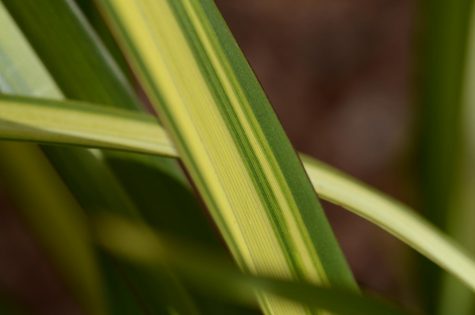
Phormium – A leaves of a Phormium ‘Yellow Wave’ plant sparkle in the sunlight in front of the Athletic center. Phormium is valued for its variegated leaves.

An informative sign stands on one of the walkways that cut through the landscaping. The sign describes the the three types of fruit trees and how the trees’ presence is an ode to the Santa Clara Valley of the past, which was dominated by orchards. The sign also explains how the orchard aims to encourage natural pollination. “You have to have bees for pollination of the fruit trees,” facilities director Mike Bassoni said. “You’re gonna get optimum fruit production if you have a high bee count.” Plans to launch developments that will educate students about the process of pollination are underway. “Ms. Chetty was researching the potential of having an indoor-outdoor beehive in Nichols Hall,” Bassoni said. “There would be a clear tube up high in the building where the bees wouldn’t potentially hurt anyone. They would come into the building, and the whole inside of the hive would be visible through plexiglass. You could watch bees bring the pollen in, create honey, and that’s going to also help for fruit production.”
This piece was originally published in the pages of The Winged Post on Aug. 31, 2018.
About the Contributor

Irina Malyugina, Photo Editor
Irina Malyugina (11) is the photo editor of Harker Aquila and the Winged Post. This is her third year on staff. She has a passion for visual storytelling...


















![“[Building nerf blasters] became this outlet of creativity for me that hasn't been matched by anything else. The process [of] making a build complete to your desire is such a painstakingly difficult process, but I've had to learn from [the skills needed from] soldering to proper painting. There's so many different options for everything, if you think about it, it exists. The best part is [that] if it doesn't exist, you can build it yourself," Ishaan Parate said.](https://harkeraquila.com/wp-content/uploads/2022/08/DSC_8149-900x604.jpg)




![“When I came into high school, I was ready to be a follower. But DECA was a game changer for me. It helped me overcome my fear of public speaking, and it's played such a major role in who I've become today. To be able to successfully lead a chapter of 150 students, an officer team and be one of the upperclassmen I once really admired is something I'm [really] proud of,” Anvitha Tummala ('21) said.](https://harkeraquila.com/wp-content/uploads/2021/07/Screen-Shot-2021-07-25-at-9.50.05-AM-900x594.png)







![“I think getting up in the morning and having a sense of purpose [is exciting]. I think without a certain amount of drive, life is kind of obsolete and mundane, and I think having that every single day is what makes each day unique and kind of makes life exciting,” Neymika Jain (12) said.](https://harkeraquila.com/wp-content/uploads/2017/06/Screen-Shot-2017-06-03-at-4.54.16-PM.png)








![“My slogan is ‘slow feet, don’t eat, and I’m hungry.’ You need to run fast to get where you are–you aren't going to get those championships if you aren't fast,” Angel Cervantes (12) said. “I want to do well in school on my tests and in track and win championships for my team. I live by that, [and] I can do that anywhere: in the classroom or on the field.”](https://harkeraquila.com/wp-content/uploads/2018/06/DSC5146-900x601.jpg)
![“[Volleyball has] taught me how to fall correctly, and another thing it taught is that you don’t have to be the best at something to be good at it. If you just hit the ball in a smart way, then it still scores points and you’re good at it. You could be a background player and still make a much bigger impact on the team than you would think,” Anya Gert (’20) said.](https://harkeraquila.com/wp-content/uploads/2020/06/AnnaGert_JinTuan_HoHPhotoEdited-600x900.jpeg)

![“I'm not nearly there yet, but [my confidence has] definitely been getting better since I was pretty shy and timid coming into Harker my freshman year. I know that there's a lot of people that are really confident in what they do, and I really admire them. Everyone's so driven and that has really pushed me to kind of try to find my own place in high school and be more confident,” Alyssa Huang (’20) said.](https://harkeraquila.com/wp-content/uploads/2020/06/AlyssaHuang_EmilyChen_HoHPhoto-900x749.jpeg)


